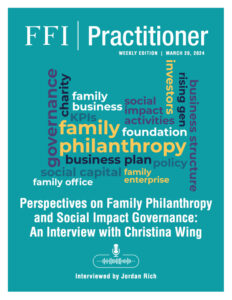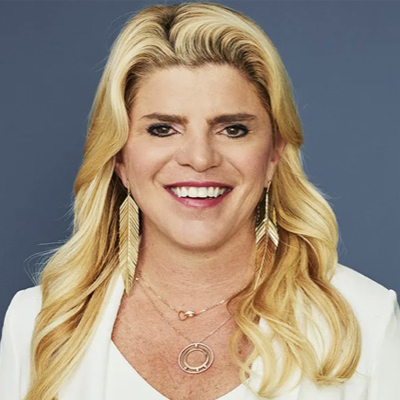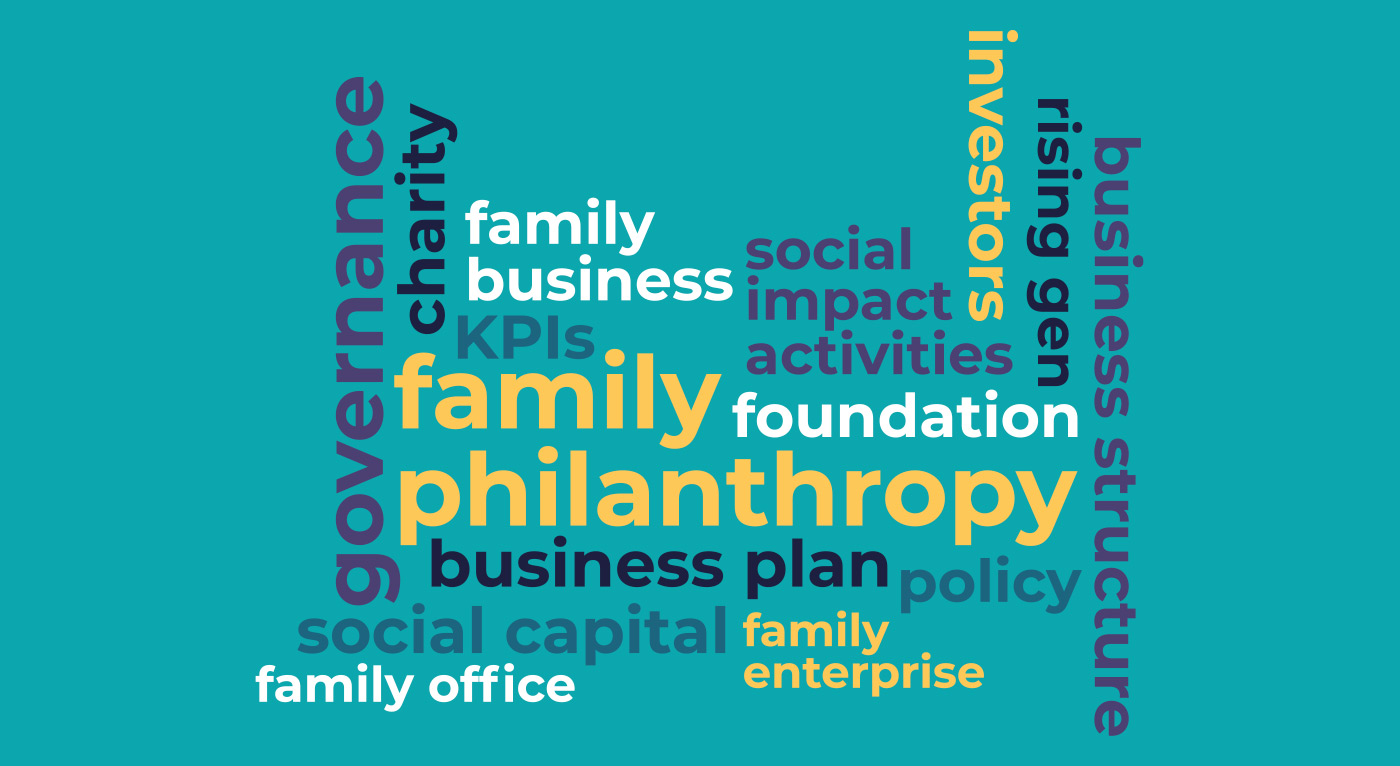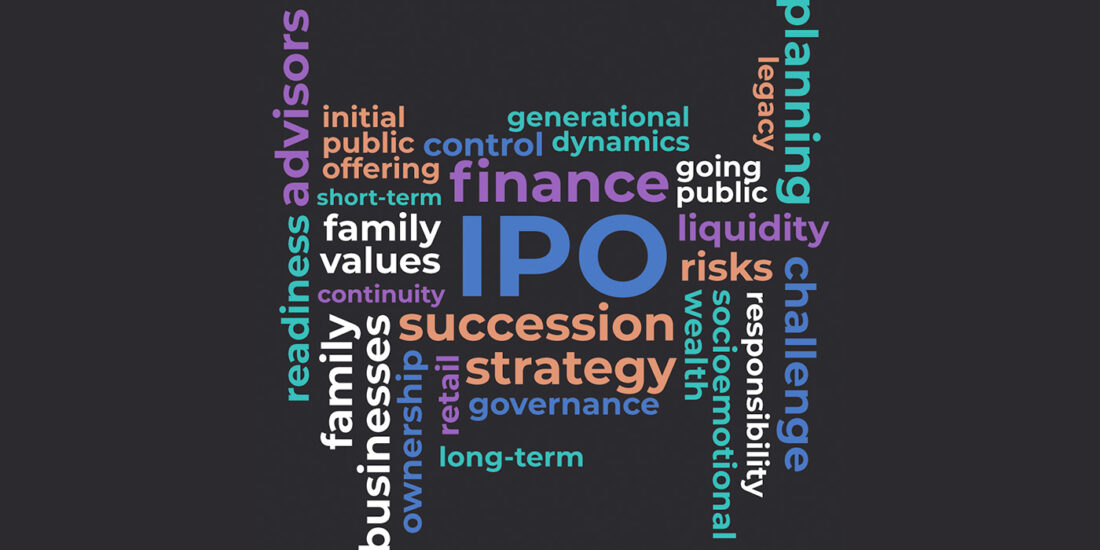
View this edition in our enhanced digital edition format with supporting visual insight and information.
This week, we are pleased to feature a podcast conversation with Christina Wing, founder of Wingspan Legacy Partners. In this podcast, Christina discusses governance for family philanthropy, social impact investing as a strategy for rising-generation leaders, and the importance of establishing effective governance practices to provide oversight of family foundation activities.
Podcast Transcript
Jordan Rich (JR): Hello and welcome to the FFI Practitioner podcast. Today’s discussion concerns effective governance for family philanthropy and social impact activities. Our guest, Christina Wing, is founder of Wingspan Legacy Partners, a family business and family office advisory firm. Christina also serves as a senior lecturer at Harvard Business School and chairs Harvard’s Executive Education Program, entitled “Families in Business.” As part of her work, Christina helps enterprising families navigate and design effective governance to oversee their social impact and philanthropic activities. Christina, share with us your background in family philanthropy and why this is the path you’ve taken.
Christina Wing (CW): My experience stems from a very young age of having a family that created a family business. I saw over the years all the ways that, if we’d had advisors that could [have helped] us, we would have done things differently and been able to contribute even more to society. Our mission as a family was always to contribute a lot to society, but I think some of the decisions we made as a family hurt our ability to maximize that. So, the reason I believe in working with family enterprises is that they have a disproportionate ability to give to society through job creation but also through giving. I bet on them more than I bet on our government to give, give big, and give meaningfully. If we can be a part of helping families avoid some of the pitfalls, distractions, and lawsuits, and keep them on the right path, I know in their heart they will end up doing a lot for society.
If we’re talking about philanthropic giving, there are many ways to do it. But to back up a little bit, the word “foundation” has led people to think this is a side project. But in reality, foundations are another family enterprise that need governance. They need both an investing side—because the foundation has money it has to take care of—and then they need a deployment side with governance as well. And if you treat foundations like a business, you’re going to maximize your results based on the fact that the giving side has one set of KPIs and the investing side has a different set.
The KPIs that foundations have need to be twofold: one for giving the money away and one for the investing of the money before you give it away. They are two totally different roles. You can merge the two and have KPIs on the investing side that also do societal good or represent your values as a family. An example would be if, on the foundation side, you’re giving to cancer research as a gift, you can invest in companies that are working towards cancer research or studies. So you can merge the two. Where people get confused is [in asking], “Should our foundation maximize for return on invested capital instead of return on social capital?” I believe that it should maximize for return on social capital. It doesn’t mean [the investment will yield] no returns, but it means, why not have influence in areas that help the other side of the sheer giving?
JR: The difference between a donor-advised fund and a foundation—obviously, it matters to individual families. How do you define it, very basically?
CW: Basically, an individual foundation allows you to pursue whatever you want. A donor-advised fund allows you to select things that you’re interested in, but it doesn’t allow you to add that you might be interested in a Doberman [rescue] foundation. You might have other things you want to do that you can’t do through that [a donor-advised fund]. The other thing about donor-advised funds: rarely do people get as involved with the actual physical side of participating in the organizations. Many people use it as a way to facilitate checks and sometimes monitor KPIs. On the foundation side, you have an ability to use it as a forum to educate your family, to have quarterly meetings on things. It’s much more customized. I would equate it to the difference between a single-family office and using a high-net-worth person at one of the investment banks [to invest your money]. There’s a very different level of intimacy.
JR: Christina, let’s talk about the key questions you’re going to raise when someone is considering making a step towards philanthropy. The questions you need to ask these family members to begin with.
CW: My first question would be, “Why now?” I say that because I believe giving should start when you’re very young. You can give your time and your money before you have a lot of money. The whole intention that, “I’m going to go make all my money and then start giving it away,” I think is a real loss. I think people should give along the way. So, the first thing I would ask them is “Why now?”
Then, “What is the purpose of your giving?” Is the purpose of your giving around targeted areas? Is the purpose of your giving that you just feel like you have so much you want to give away? Is the purpose of your giving social, in that you want to be inducted into a society, so to speak? A purpose can also be multi-generational education and teaching. To create the right foundation, you have to be true about what your goal and your mission is.
JR: Some tips, some ideas to help people in the process. You’ve already mentioned one of them: start now. People have the intent to give, but they fail to act. But what would be some of the other things that should be on the minds of families considering this?
CW: I believe everybody should realize this is another business, and because it’s another business, it should be treated like a business: with a business plan, with KPIs, and the right people in the right roles. What that means is, it’s not a place to put family members that don’t have other jobs. This is real money, real impact. Know what people are capable of and create your team to execute on your mission. Don’t have a team and then think they’re going to be able to execute on something that you care about, because that’s not the way it works. You don’t start a building project by digging a hole. You start by having a plan and then going forward.
JR: Is there a role for just about everybody in this process? People who might be on the outskirts—is there something for them as well?
CW: My view is you get out of it what you put in it. Our family has a family foundation, and we have strict rules around the ages [to participate]; around how you can nominate something for a charitable donation; what your level of interaction needs to be with the charity based on a certain check size. If you have set it up in a way that you [have established the] rules of the game, then everybody that wants to follow those rules can participate and should. But you’d be shocked—a lot of people don’t like to follow the rules!
JR: And another thing—you’ve mentioned it more than once—that this is serious business. This is a very important part of the business structure of the family, so revisiting the plan and updating and tweaking the plan is something that you recommend.
CW: Absolutely. First of all, if we could predict ten years out what the needs in our communities would be, we could maybe prevent them from happening. You constantly need to tweak the skill set of the family, the areas that you give in, and possibly your check sizes, depending on how the investment side of the portfolio does. It’s not like you write this in black ink and can never change it. It should be a living document. But to that, it should have a policy of how it’s updated. There should be terms, and there should be people involved in the updating. And I believe the rising gen should always be involved in the updating, because what they care about matters, and we want them to also have a place in the family to do good and do well.
JR: So much of the funding for charitable organizations comes from family groups and foundations like this. The world would be a sorrier place without this kind of support, wouldn’t it?
CW: It would. The scary thing is by the middle of the century, it’s estimated that about $40 trillion is going to change hands. Earners give money away a lot easier than inheritors do. We have about $40 trillion that is going to be inherited. Why should we care about that? Because if these inheritors don’t keep up the giving of their predecessors, a lot of organizations and people are going to be in a world of hurt.
A way to bridge that is social impact investing. You know, the rising gen tends to feel better about using their money in a social impact way that has some return versus just giving it away. It’s hard to give away something you didn’t earn. It’s not that they’re greedy. It’s just that it’s hard to give away something you didn’t earn. And we are going to need to start educating them more, and sooner, bringing them into the giving, and specifically teaching them that you can use your foundation money in other ways, i.e., social impact or being an active LP in things you invest in. There are many ways to have impact, but we’ve just got to get going.
I wish that many of the things we all fund wouldn’t need funding, but a lot of the things people fund, there’s never going to be a cure for. We’re always going to need to have people that make donations. You know, [in this country] we approach giving from a very US-centric philosophy, and we think that as Americans we are the most generous givers. But in reality, we have death tax, and we have benefits from giving as high-net-worth people. There are many countries where they don’t have death tax, they don’t get benefits, and they give a ton. You see them give early and often, and they give locally and globally. I think it’s important that we have a global context that, for instance, some of the biggest givers in the world are in India, where there’s no death tax, there’s no mandate, and the benefit is to society. It doesn’t reduce their taxes. So, I think it goes back to your original question, when you said, “What would be my first question?” and it’s “Why now?” Some people answer, “Well, I’m old, and I don’t want to give it to the government.” That’s okay, but that’s a different strategy than other strategies. Giving needs to be determined and understood based on geography as well.
JR: Christina, we thank you for your time and your expertise. Any final thoughts?
CW: I think the one thing that I’d like to get across is that “social impact investing” does not mean the same thing as “giving.” Let’s be clear, there are really three buckets. There’s the bucket of giving: you give the money. There’s the bucket of social impact, where you’re accepting a lower return on invested capital to have the money going to something that’s going to have an outsized social impact. Then there’s investing. Even if you’re in the investing category and you’re going for high return on invested capital, you can still be an active investor and invest in things that are in line with your values. If you look at the world and you say, “My values are XYZ,” they should permeate through all parts of how you invest and how you work. And I just hope that more investors start to be active investors because that activity in itself is another way of giving.
JR: Thank you, Christina, for your thoughts and comments on effective governance for family philanthropy and social impact activities. To learn more about this and other topics, visit ffipractitioner.org. This is Jordan Rich. Thank you for listening.
About the Contributor

Christina Wing founded Wingspan Legacy Partners to help founders and families navigate the intersections between family dynamics, business operations, wealth, legacy, and philanthropic impact. Christina is on the faculty of Harvard Business School (HBS), where she focuses her research primarily on topics surrounding family enterprises. She chairs the HBS executive education program, Families in Business, and co-chairs the Family Office and Rising Generation programs. She can be reached at info@wingspanlegacy.com.
Interviewer: Jordan Rich is celebrating a quarter century at one of America’s top legacy radio stations, interviewing thousands of celebrities, authors, actors and interesting personalities throughout his career. Jordan is co-owner of Chart Productions Inc, and also teaches voice-over acting. His main focus these days is in podcast creation and production, featuring conversations with the world’s most creative people.

View this edition in our enhanced digital edition format with supporting visual insight and information.





